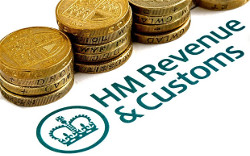 As of 4 December 2014, new stamp duty rates will be in place for anyone buying a house anywhere in the UK. These new rates have been introduced to reduce stamp duty for most people buying a home and to make the charges fairer for everyone. You will be affected by the new rates if you buy a residential property in the UK which costs you over £125,000.
As of 4 December 2014, new stamp duty rates will be in place for anyone buying a house anywhere in the UK. These new rates have been introduced to reduce stamp duty for most people buying a home and to make the charges fairer for everyone. You will be affected by the new rates if you buy a residential property in the UK which costs you over £125,000.
Before 4 December 2014 it was necessary to pay tax at a single rate for the whole price of the property. Now the system works much more like income tax: tax bands have been put in place so that you only pay the corresponding rate of tax on each part of the full price of the property. For example, previously, if you had purchased a house for £185,000, you would have paid 1% stamp duty on the whole price of the property, costing you £1,850 in total. Now, if you buy a property for £185,000, you will pay nothing on the first £125,000 and then 2% stamp duty on the rest of the price of the house, costing you £1,200. This works out as a saving of £650 under the new rules
Under the new regulations, 98% of homebuyers will pay less tax in stamp duty than they would have purchasing the same property before the changes came into effect. Anyone who purchases a home which costs between £125,000 and £937,500 will either end up paying less money in stamp duty or will be unaffected by the changes. The changes apply only to buyers purchasing properties for residential purposes and do not apply to anyone buying commercial property. There have been no changes made to stamp duty relating to the purchase of commercial property, so the existing rates are still in place.
If you do get far enough in the process of buying a house, your solicitor will probably work out for you how much stamp duty you will have to pay. If you would like to work it out for yourself then you can either use the information in the tables below to calculate the fee applicable to your property, or you can visit the stamp duty calculator on the HMRC website.
The way in which you pay your stamp duty will not change. You will still be required to submit a stamp duty return and pay the relevant amount within 30 days of the completion of the purchase of your property. If the property costs more than £40,000 but less than £125,000, you will still have to complete and submit a return even though no payment will be necessary. It is the responsibility of the buyer to make sure that the form is completed and submitted on time and that the necessary payments are made, but most people hire a solicitor to do this on their behalf.
Just as before 4 December 2014, when HMRC receives your completed stamp duty return, you will be issued a certificate which will enable you to register your details to the property at the Land Registry or the Registers of Scotland.
Price paid for property New rate of stamp duty
£0 - £125,000 0%
£125,001 - £250,000 2%
£250,001 - £925,000 5%
£925,001 - £1,500,000 10%
£1,500,001 and above 12%
The new rates will also apply to homebuyers in Scotland, but only until 1 April 2015, when the Land and Building Transaction Tax will come in to replace stamp duty in Scotland.

